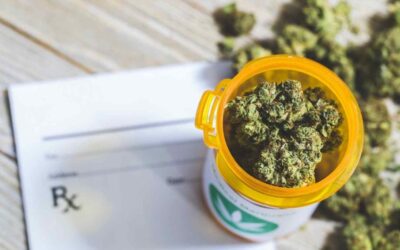Safe Food Choices for Your Baby: Avoiding Dangerous Toxic Metals

As parents, your top priority is ensuring your children’s health and safety. Yet, recent revelations about heavy metals in baby food have left many anxious and overwhelmed. How can you feed your kids without putting them in situations where they might get sick?
The goal of this guide is to give you the information and steps you need to make safe choices about your baby’s nutrition. We’ll explore the risks associated with heavy metals, offer safe food alternatives, and discuss ways to advocate for stricter safety standards.
Understanding Heavy Metals in Baby Food
Parenthood often feels like navigating uncharted waters, especially regarding nutrition. The heavy metals found in food items can have severe consequences for your child’s development and long-term health.
Let us explore the risks associated with them:
Lead
Mayo Clinic states that lead exposure in early childhood can have devastating effects. It disrupts brain development, leading to behavioral issues, learning impairments, and lowered IQ. Lead poisoning can harm the nervous system, impair growth, and cause hearing loss.
Seizures or a coma may result in extreme situations. Chronic exposure is associated with a higher chance of adult kidney impairment and hypertension.
Arsenic
The American Academy of Pediatrics states that arsenic exposure in early childhood carries serious health implications. It may compromise the immune system, heightening vulnerability to infections. Prolonged exposure may result in respiratory complications, such as bronchiectasis.
Arsenic also affects liver function and cognitive development. Skin problems such as eczema-like rashes, thickening, and pigmentation changes are common. Perhaps most alarmingly, early arsenic exposure is associated with a higher risk of skin cancer later in life.
Mercury
Cleveland Clinic states that mercury, particularly methylmercury, poses significant risks to developing brains. Early exposure can impair cognitive functions, affecting memory, attention, and language skills. It may cause visual-spatial difficulties and motor skill deficits.
In severe cases, mercury poisoning can lead to cerebral palsy-like symptoms. Long-term exposure is associated with an increased risk of cardiovascular problems and immune system dysfunction.
These metals enter the food chain through contaminated soil, water, and certain agricultural practices. Crops absorb them, concentrating on various foods. Processing methods can sometimes increase their levels.
Identifying High-Risk Foods
Certain baby foods carry a higher risk of heavy metal contamination. Some baby foods have a greater likelihood of being contaminated with heavy metals. The National Library of Medicine states that root vegetables, such as carrots and sweet potatoes, often absorb higher levels of metals from the soil.
The European Food Safety Authority states that rice-based products are particularly concerning due to their high arsenic content. Fruit juices, especially apples and grapes, often contain elevated levels of lead and arsenic.
When examining labels, look beyond marketing claims. Focus on ingredient lists, avoiding products with rice flour or brown rice syrup as the main ingredients. Be cautious of foods containing fruit juice concentrates.
Rice puffs and teething biscuits also frequently contain concerning levels of arsenic.
To minimize exposure, diversify your baby’s diet. Opt for oat, barley, or multigrain cereals instead of rice-based ones. Prioritize whole fruits. Choose a variety of vegetables, not just root types. By being informed about high-risk foods, you can make safer choices for your baby.
Baby Food Brands Under Scrutiny
TorHoerman Law states that recent investigations have revealed unsettling levels of heavy metals in several well-known baby food brands. This discovery has caused considerable alarm among parents. Let us examine some key findings from these reports:
- Gerber: Some products were found to contain 90 parts per billion (ppb) of arsenic. This exceeds the 10 ppb safety threshold. Lead content in certain items reached nearly 50 ppb, well above the FDA’s 5 ppb limit.
- Beech-Nut: Testing of raw ingredients uncovered alarming levels of heavy metals. Arsenic concentrations approached 900 ppb in some cases, while lead levels were found to be similarly high.
- Happy Family Organics (Nurture): Lead content in some products was reported to be over 600 ppb. Certain items contained arsenic levels around 180 ppb.
- Earth’s Best Organic: Ingredients used in some products showed arsenic levels over 300 ppb. Finished items were found to contain lead levels exceeding 350 ppb in some instances.
- Plum Organics: Several rice-based products consistently tested at or above 200 ppb for arsenic, with some reaching levels as high as 470 ppb.
Many parents are taking the legal course against these companies. Anger against these big players is around the fact that they concealed the true nature of their products. The toxic baby food lawsuit holds these players accountable for the damages, physical, emotional, and monetary, caused by their food products.
The legal landscape does not guarantee immediate solutions or struct actions against food-producing companies. However, as parents, you should stay informed about ongoing testing results and explore alternatives to reduce potential heavy metal exposure.
Safe Alternatives and Low-Risk Options
Navigating safer food choices for your baby requires a strategic approach. Focus on foods naturally low in heavy metals. Quinoa, for example, is a nutritious grain alternative typically low in arsenic. Amaranth and buckwheat are other excellent options for introducing diverse textures and nutrients.
According to ScienceDirect, their gluten-free nature makes them suitable for infants with sensitivities. Research has shown that foods made with these grains can have positive biological effects. The increased body mass and protein content suggest these grains could support healthy growth in babies.
When it comes to proteins, opt for legumes like lentils and chickpeas. These not only provide essential nutrients but are generally low in heavy metals. Fish can be a good source of omega-3 fatty acids, but choose smaller species like salmon or trout, which typically have lower mercury levels.
You can also consider frozen fruits and vegetables as an alternative to canned options. Freezing methods often lock in nutrients without additional preservatives that may contain heavy metals.
Preparation methods can also impact heavy metal content. Soaking and rinsing grains before cooking can reduce arsenic levels. For vegetables, steaming rather than boiling can help retain nutrients while minimizing potential contaminants.
If possible, try to invest in a water filter certified to remove heavy metals. This is important if you’re preparing formula or cooking with tap water.
Remember, variety is key. By offering a diverse range of foods, you’re ensuring a broad nutrient profile. Moreover, you are also reducing the risk of overexposure to any single potential contaminant.
FAQs
Q1: How can I test my homemade baby food for heavy metals?
A: While home testing kits are available, their accuracy varies. Consider sending samples to certified laboratories for comprehensive analysis. Consult with pediatricians or nutritionists for guidance on interpreting results. Remember, no food is entirely free of heavy metals; focus on minimizing exposure through diverse, balanced diets.
Q2: Are there any signs that my baby might have been exposed to high levels of heavy metals?
A: Heavy metal exposure symptoms can be subtle and varied. If concerned, consult a pediatrician for proper evaluation. They may recommend blood tests or developmental assessments. Regular check-ups are crucial for monitoring overall health and development, regardless of potential exposure.
Q3: How can I advocate for stricter regulations on heavy metals in baby food?
A: Contact local representatives and food safety agencies to express concerns. Join or support consumer advocacy groups focused on food safety. Stay informed about policy developments and participate in public comment periods for proposed regulations. Share credible information within your community to raise awareness.
The journey to safeguard your children’s health extends beyond individual choices. It calls for a collective shift in food production, regulation, and consumer awareness.
By prioritizing safe food options and advocating for stringent standards, you protect your babies and pave the way for a healthier future generation. This holistic approach embodies the essence of responsible parenting in an increasingly complex nutritional landscape.
Explore detailed insights and analyses on a wide range of topics at USA MAGENE







